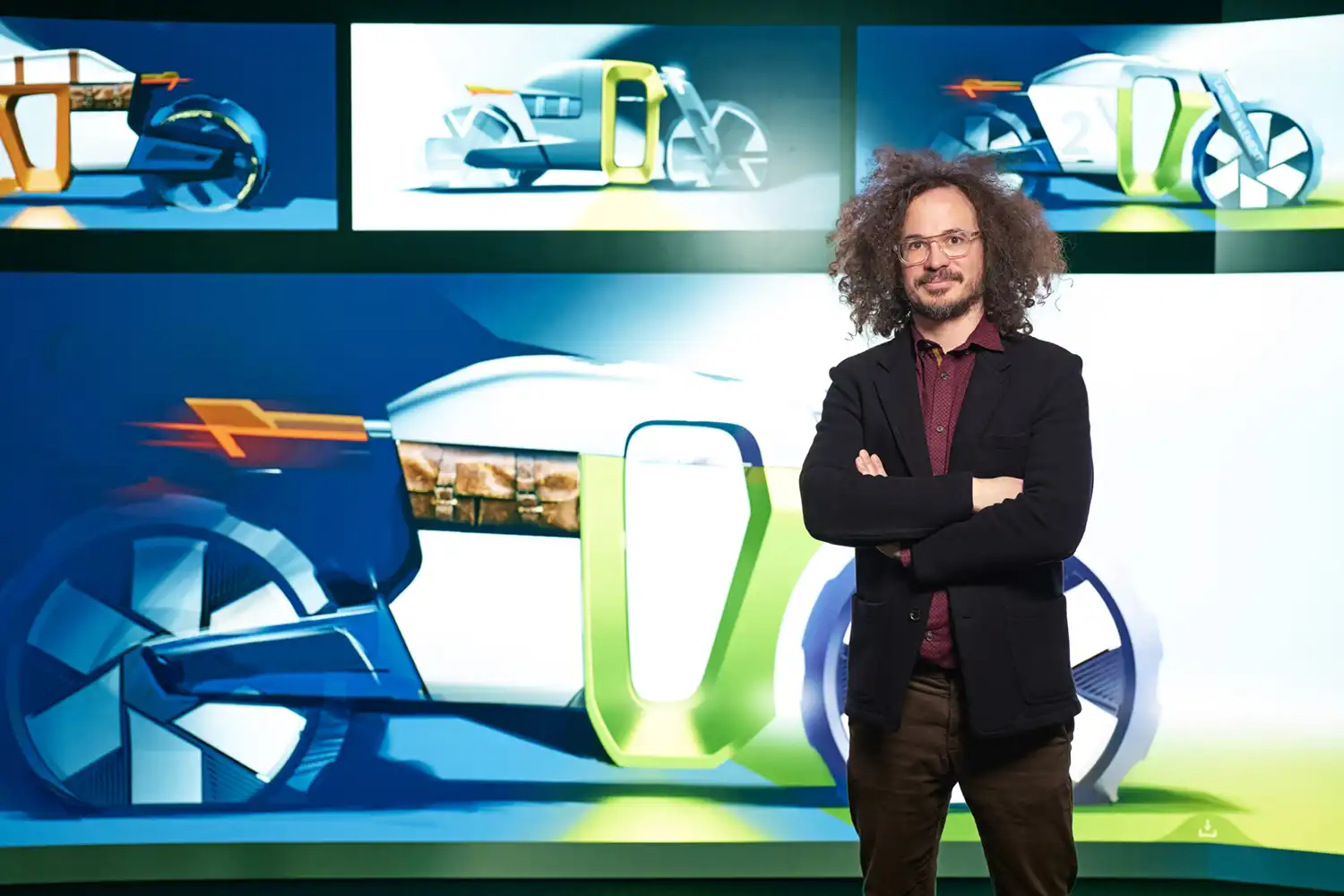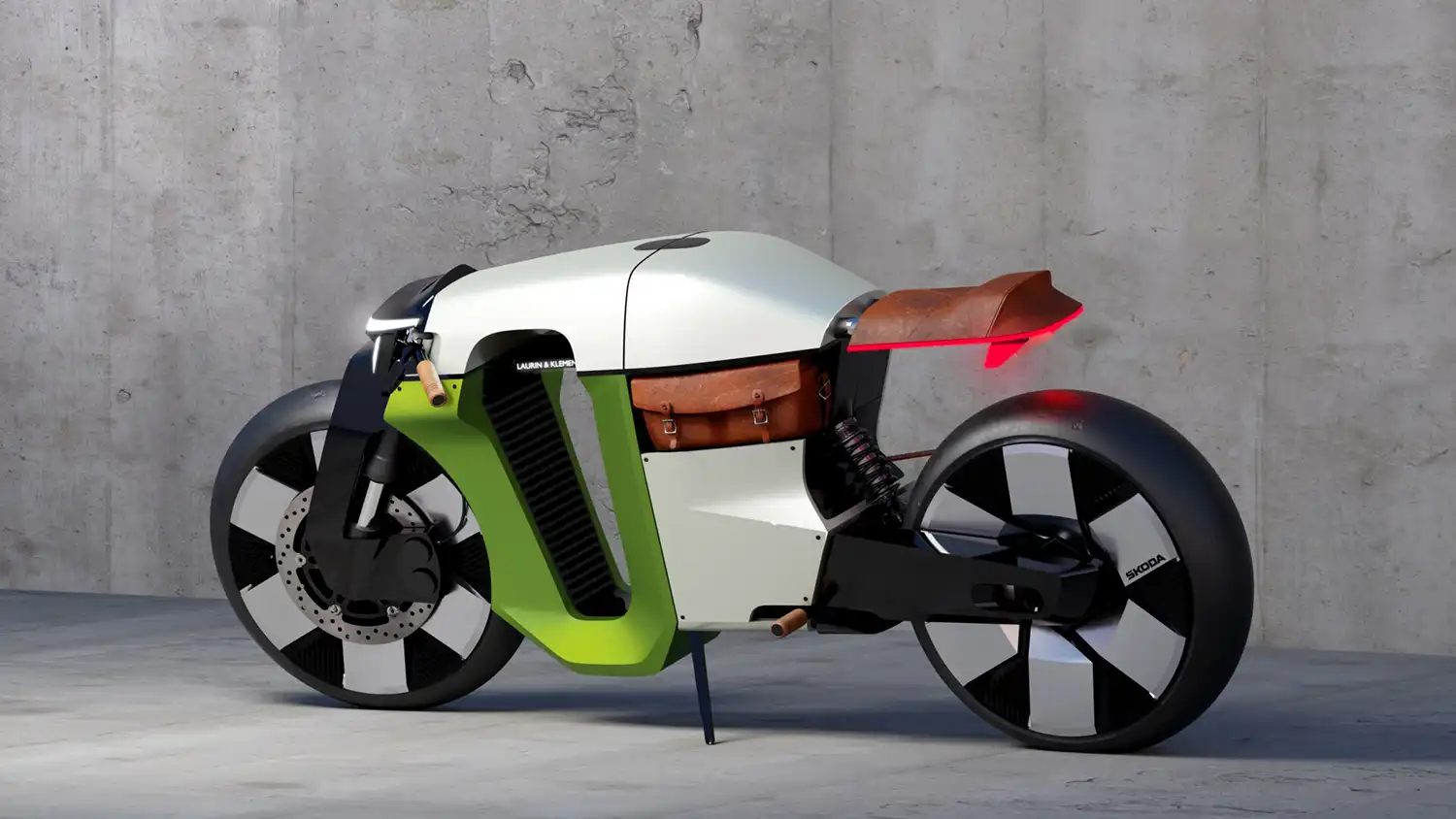
Škoda celebrates its 130-year design legacy by revisiting its rich history, drawing inspiration from iconic models to create a series of reimagined classics. Following the tributes to the 200 RS, 1203 van, and Voiturette, Škoda’s latest endeavor is its most daring yet: the Slavia B concept motorcycle. This concept is the first to fully embrace Škoda’s striking Modern Solid design philosophy, taking its cues from the groundbreaking Slavia B motorcycle of 1899. This early two-wheeler, produced under the Laurin & Klement brand (which later evolved into Škoda Auto), was renowned for its advanced engineering and played a crucial role in establishing the brand’s reputation for innovation.

Modern Solid Design Ethos: Škoda’s Modern Solid design language is characterized by a fusion of minimalism and robustness, emphasizing bold forms, clean lines, and functional aesthetics. This design direction reflects the brand’s commitment to electric mobility, sustainability, and the increasing role of digitalization in future vehicles. The decision to commence this new series of classic concepts with a motorcycle is particularly significant, given that Škoda’s journey began in 1895 with the production of bicycles, followed by motorcycles.
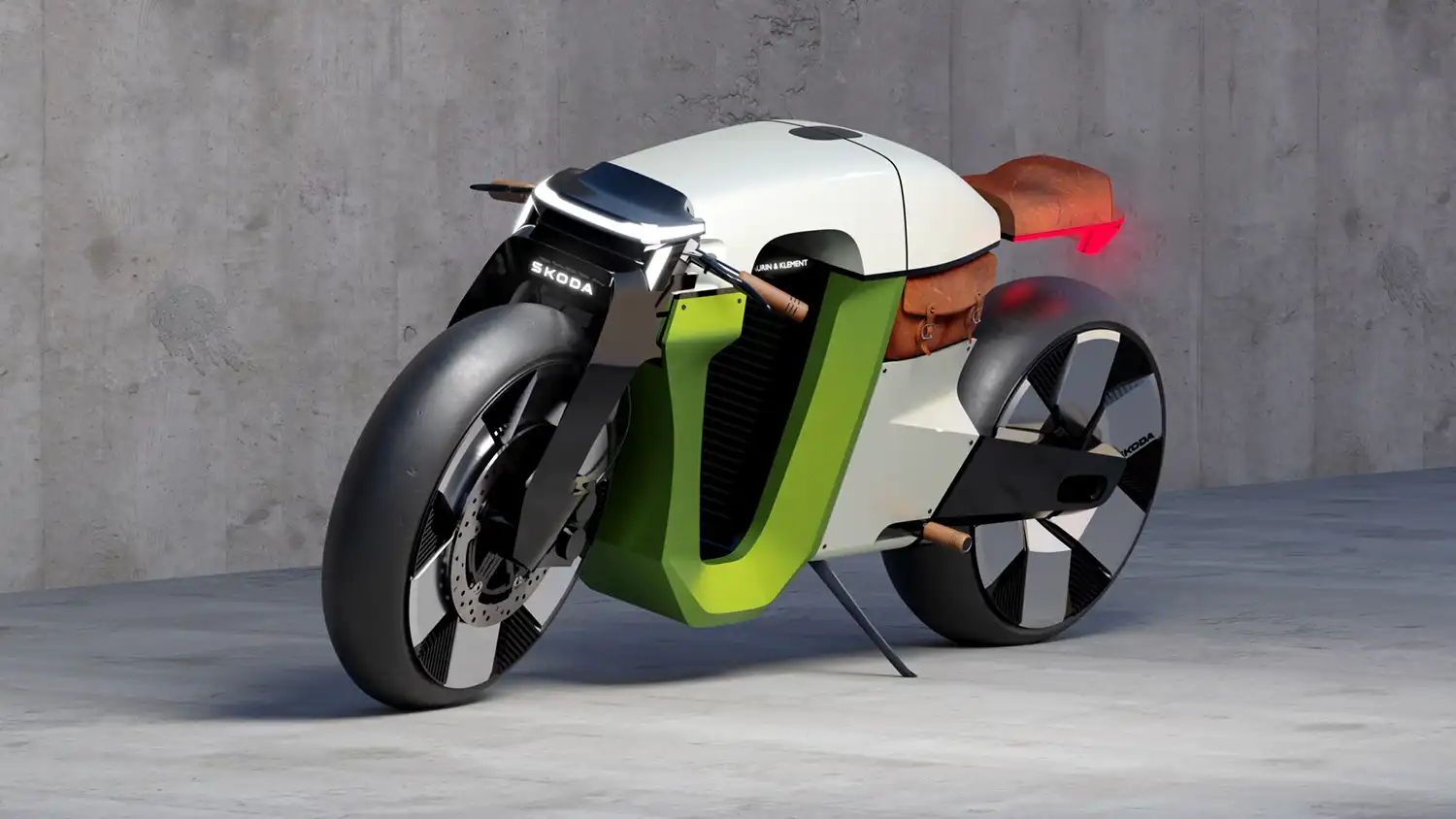
Homage to the Original: Inspired by the 1899 Slavia B, the concept motorcycle thoughtfully retains the distinctive frame silhouette of its predecessor while adapting it for the electric era. The space that once housed the combustion engine is now deliberately open, with the Škoda logo appearing to be suspended within the frame structure. A prominent vertical line visually divides the front and rear sections of the motorcycle, artfully highlighting the balance between historical inspiration and contemporary innovation.
Designer’s Vision: The Slavia B concept was spearheaded by French designer Romain Bucaille, who typically contributes to Škoda’s car exterior designs. He explained his motivation: “I wanted to go back to the brand’s roots. As someone who also loves motorcycles, this was a refreshing change and a great creative challenge.”
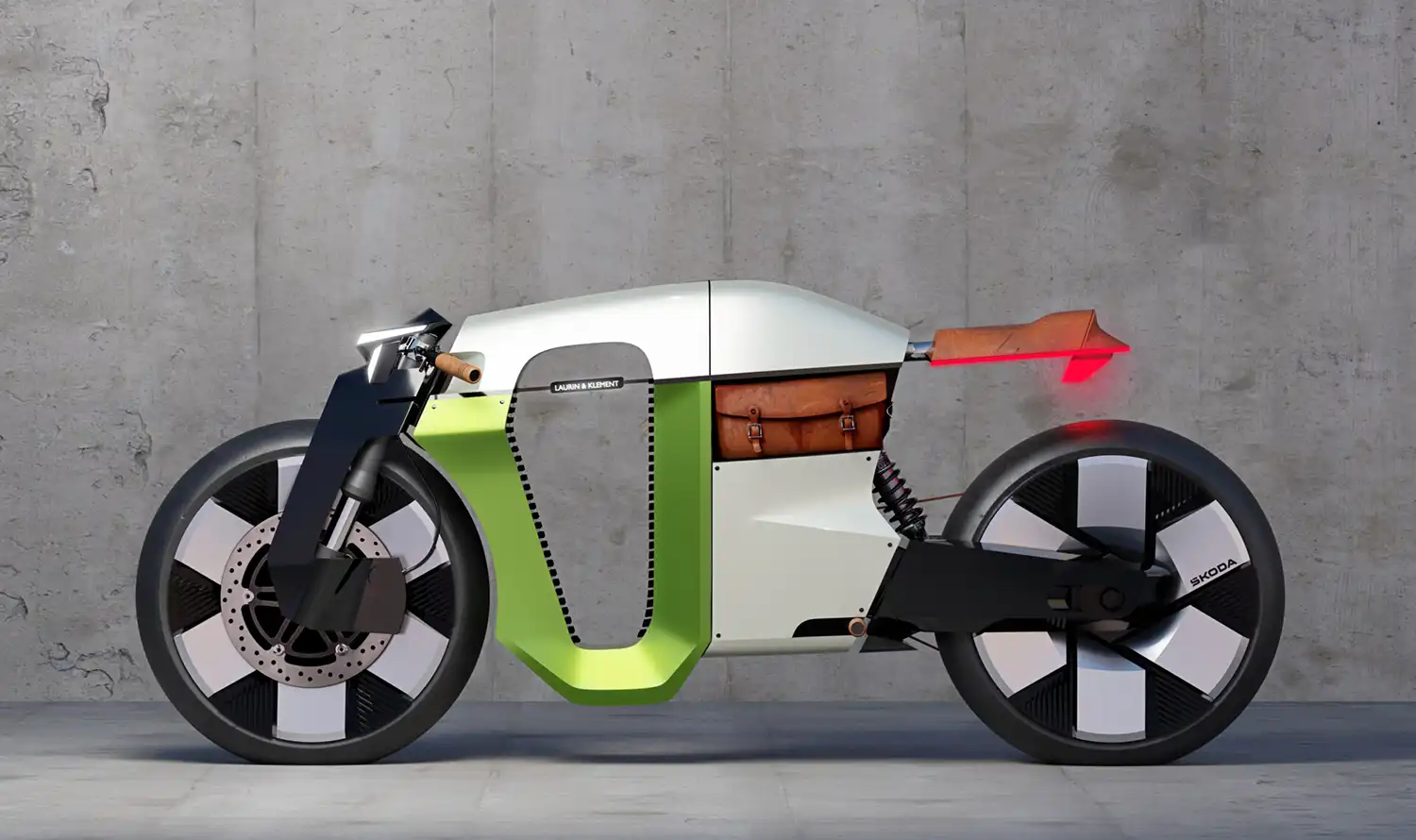
Nods to Heritage: The front design of the concept subtly acknowledges Václav Laurin’s pioneering work in motorcycle geometry and handling. Furthermore, a minimalist, floating seat and an integrated leather tool bag serve as a respectful nod to the brand’s sporting heritage. These elements specifically pay tribute to Narcis Podsedníček, the factory rider who famously completed the 1901 Paris–Berlin race aboard a Slavia B motorcycle.
Futuristic Café Racer Aesthetic: Bucaille describes the final concept as a “futuristic café racer in Modern Solid style,” showcasing clean contours, sharp edges, and a unique lighting signature – design elements that are increasingly becoming synonymous with Škoda’s evolving brand identity. The combination of simple volumes and practical details aligns with Škoda’s current design philosophy, while introducing a distinctly modern interpretation.
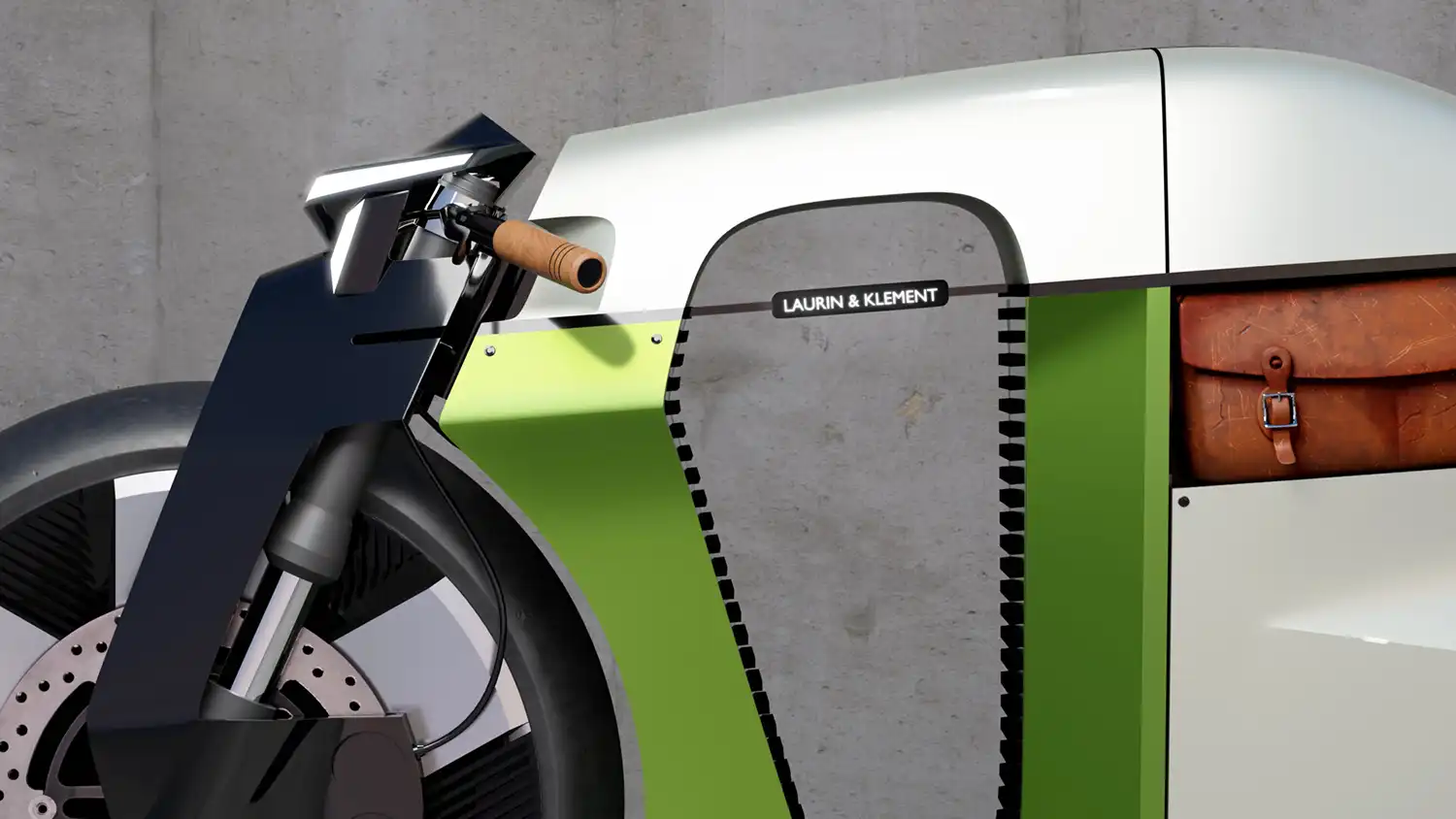
Hands-On Design Process: The design process for the Slavia B concept was characterized by a hands-on approach from its inception. “I began with pencil sketches – it had been a while since I’d drawn a motorcycle,” Romain admitted. “But the great thing about sketching on paper is that it’s instant. No need for a screen – just ideas flowing freely.” These initial sketches then evolved into a series of three digital renderings, each exploring different facets of the concept’s form before the final design was realized.
Statement of Intent: While this electric reimagining of the Slavia B is not intended for production, it serves as a compelling declaration of Škoda’s design direction and its deep appreciation for its historical roots. With plans for more reimagined iconic vehicles to follow, Škoda is demonstrating that its vision for the future is firmly anchored in a rich and inventive past.
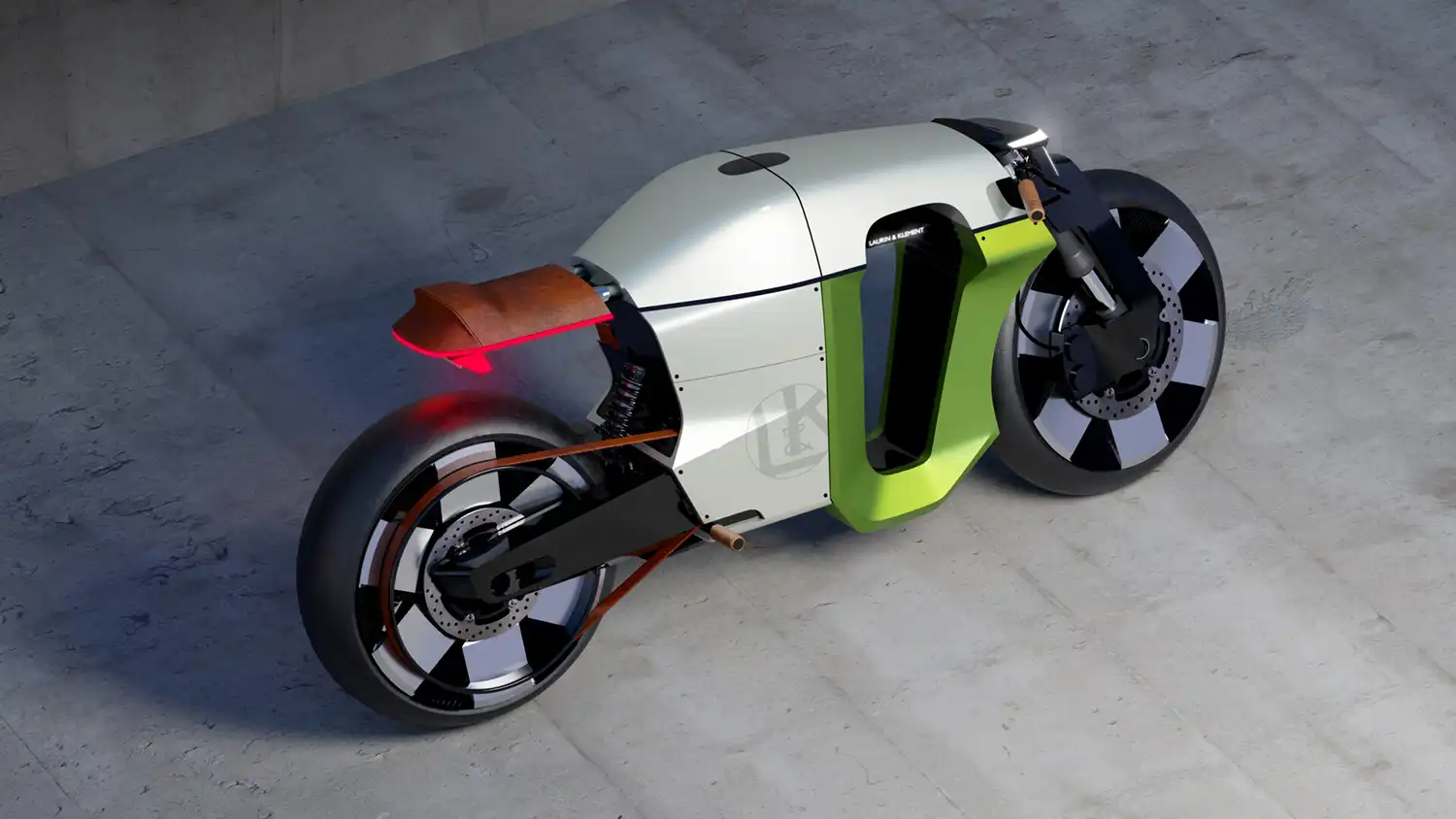
Summary
- The Slavia B concept is a futuristic electric café racer.
- It pays tribute to Škoda’s 1899 Laurin & Klement motorcycle.
- The design incorporates Škoda’s Modern Solid design language.
- Key design elements include a retained frame silhouette and an open engine bay with a suspended logo.
- The concept features a distinctive lighting signature.
- It is the first in a new series of reimagined Škoda classics.
Disclaimer: This article discusses a concept vehicle. Production plans are not currently announced, and features may change.
Source: Skoda
AI Assistance: Gemini
